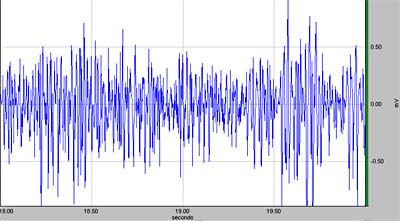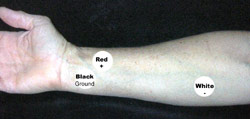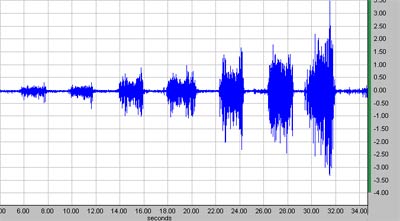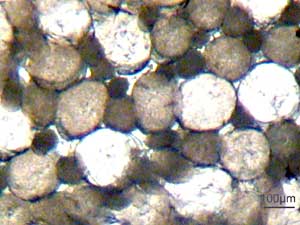
A simplified neural pathway containing 3 motor units.
To control the fingers the brain sends electrical signals that travel through individual neurons, stimulating the release of acetylcholine (ACh) from vesicles at the end of the neuron. ACh crosses the neuromuscular junction and stimulates muscle cells to contract.
- A single neuron and the muscles cells it attaches to make up a motor unit.
- The size of a motor unit depends on the function of the muscle and can contain from 10 to over 3000 muscle fibers.
- Motor units in muscles that flex the fingers are small allowing for fine control.
- Your brain determines the number of motor units in a muscle that contract as well as the rate that signals are sent to the motor units.



